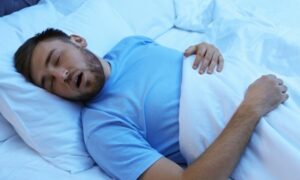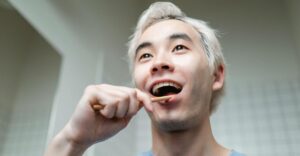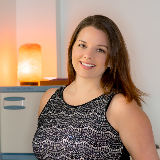Adults snore for a variety of reasons; alcohol, a high BMI, and sleeping position can all cause that annoying vibrating sound at night. In some cases, snoring in adults is a symptom of sleep apnea and requires treatment but, in a lot of cases, it’s harmless. Because of this, a lot of parents assume that their child snoring is also normal. Unfortunately, that couldn’t be further from the truth: kids should never snore. Snoring may not seem like a big deal, but for kids, it’s a red flag that something isn’t right.
What is Snoring?
Snoring happens when your airway is partially closed. In adults, the soft tissue in the throat and mouth relax and fall downward, blocking the airflow. As you breathe, the closed passage vibrates, thus making that classic snoring sound. Typically, overweight adults and adults with large tongues or tonsils are more prone to snoring.
In children, snoring occurs when the jaw and dental arches don’t develop correctly. Dentists call this “sleep-disordered breathing” or SDB. To parents, it just looks like bad teeth crowding but to a dentist, it’s a serious problem. SDB is similar to sleep apnea in that the children who have it constantly wake up at night because of their blocked airway. This leads to sleep deprivation and a host of other problems.
What is SDB?
When the body realizes that it isn’t getting enough oxygen at night, it will wake you up in an effort to alert you of the problem. This happens many, many times every night for kids with SDB. Most of the time, they won’t realize that they woke up numerous times throughout the night until the next day, when they can’t stay awake during school hours. Along with daytime drowsiness, SDB can cause other symptoms including delayed growth, nightmares, aggressive behavior, ADD/ADHD, and overall poor school performance.
If you think your child may have SDB, take a look at their teeth. Do they look like they’re coming in crowded and misaligned? Has your dentist told you that your child has an overbite or overjet? If you answered “yes” to either of those (and have noticed any of the above symptoms in your child’s day-to-day life) it may be time to book a dentist appointment.
Why the dentist?
A lot of parents struggle with understanding the relationship between their child’s sleep problems and their teeth. The two seem completely alien from each other but in reality, sleep and teeth alignment are closely related — even in adults. Your teeth dictate how your jaw is positioned which then affects your airway and how you breathe. Patients who have TMJ (a.k.a. problems with their jawbone) frequently also have sleep apnea because the two go hand-in-hand. If a child’s teeth are seriously crowded, it can keep the jaw (and the palette) from developing correctly. An underdeveloped jaw means lifelong problems or years of braces — neither of which you want your child to endure.
For stage 1 and stage 2 sleep apnea patients, we give them a small oral device to wear at night to keep the soft tissue from falling into the throat. For children with SDB, we have something similar. An orthodontic brand called HealthyStart created a three-step program that helps to gradually guide the developing teeth into the correct position.
How does HealthyStart work?
After your dentist has decided that your child is a candidate for the HealthyStart program, they’ll get them fitted for their first orthodontic appliance — a habit corrector. This ensures that the child stops thumb sucking or tongue thrusting (both bad habits for teeth development) before the two following stages in the treatment. Like all the appliances in the HealthyStart program, the habit corrector is made of soft, comfortable plastic and is custom-made for your child to wear at night.
One to five months later, your child will get their second HealthyStart device. This stage of the program is all about guiding the incoming adult teeth into the proper position. Once your child has at least four adult teeth, they’ll get their last device which accommodates the rest of the adult teeth and ensures that everything is perfectly straight.
HealthyStart typically lasts until the last adult teeth have come in (so around twelve years old). That sounds like a long time but it’s important to remember how non-invasive the treatment is. Kids in the HealthyStart program only have to wear their appliance for a few hours at night. Compare that to braces which aren’t removable (and are a lot more expensive) and you can see why a lot of parents are turning to HealthyStart.
How impressive are the results?
On average, HealthyStart has a high success rate. By the end of the treatment, the vast majority of children have straight teeth for life and no longer have SDB. If your child is snoring at night or showing other symptoms of SDB, it might be time to pick up the phone and schedule an appointment with your dentist. The older the child gets, the less effective the treatment will be. Getting them into the office as soon as possible so a trained HealthyStart provider can examine them is the key.
Find a dentist near me.








